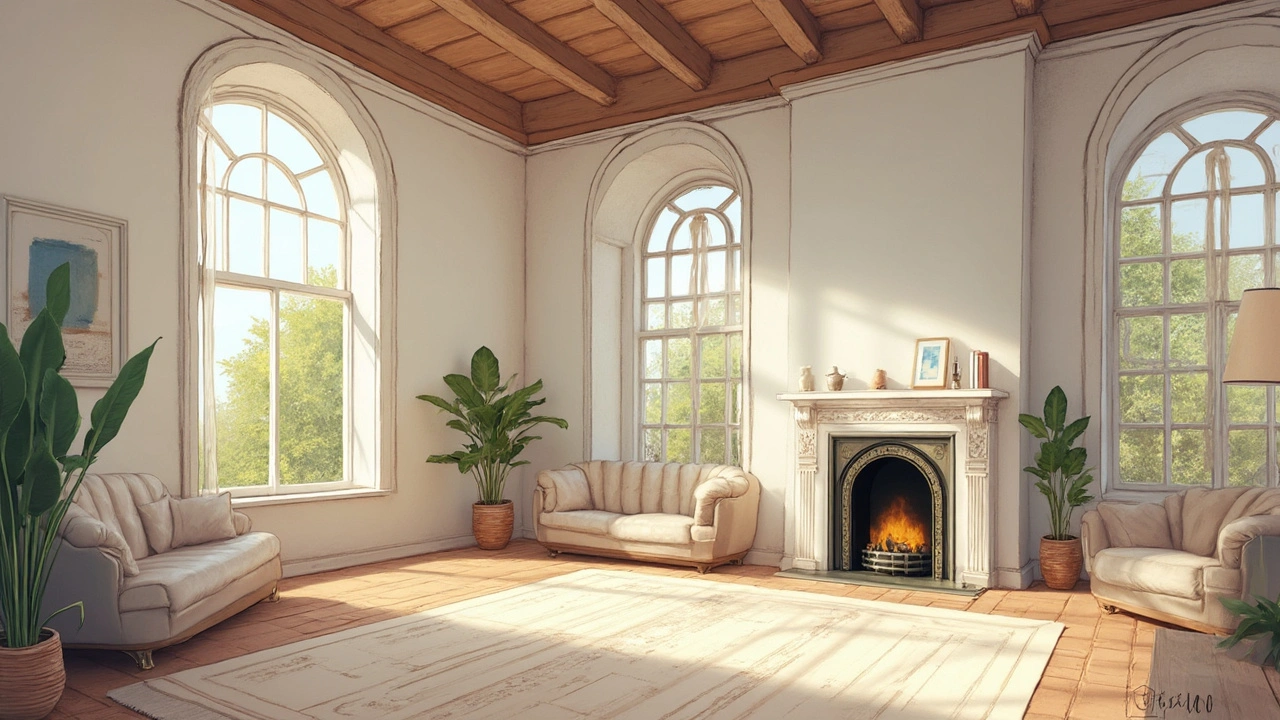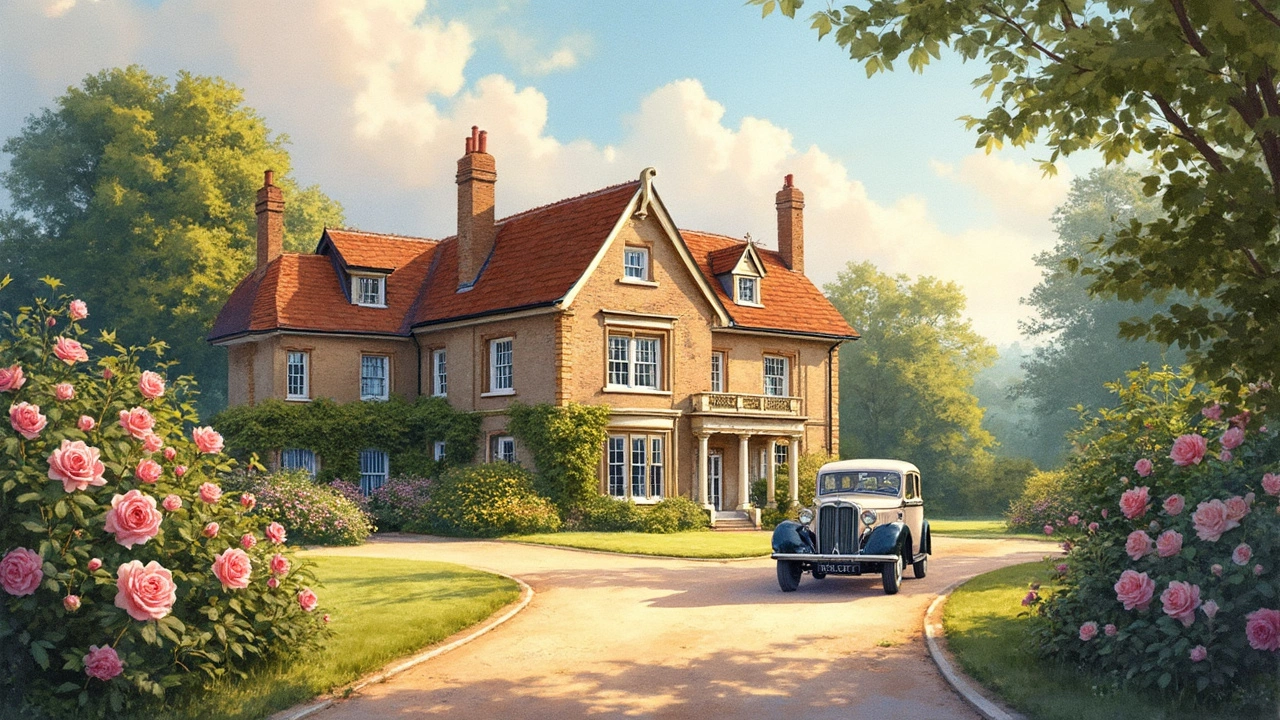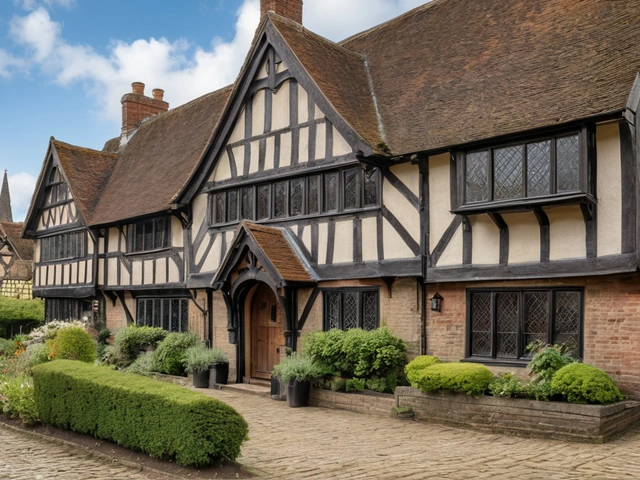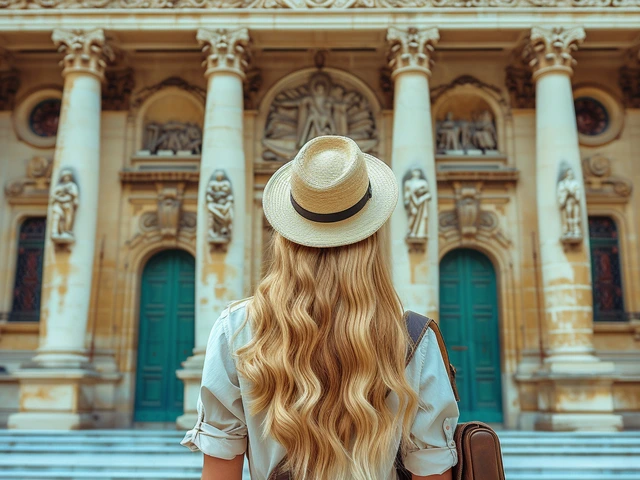Ever looked at an old building and wondered what stories its walls could tell? That's the charm of colonial architecture. It's not just about bricks and mortar; it's a tapestry of history woven through time. These structures stand as vibrant reminders of the past, capturing different cultural influences and styles that have mingled over centuries.
If you're thinking about sprucing up an old colonial home or just have a keen interest in these historical masterpieces, there's so much to discover. Understanding the architectural nuances—like those grand pillars and spacious verandas—can give you a glimpse into the craftsmanship of yesteryears.
And, fun fact, many colonial homes were built to adapt to the local climate, which gives them that unique mix of practicality and beauty. So, whether you’re strolling through a neighborhood steeped in history or considering your next home project, there's a whole world of colonial architecture waiting to be explored.
- The Roots of Colonial Architecture
- Influences Beyond Borders
- Key Features to Recognize
- Colonial Architecture in Today's World
- Restoration and Preservation Tips
- Blending Old and New in Design
The Roots of Colonial Architecture
Colonial architecture has its roots deep in the era of exploration and expansion. Back in the day, when various European nations were expanding across the globe, they brought along their architectural styles. Think of it like packing a little piece of home and setting it down in a new land. Whether it was the British, Spanish, French, or Dutch, each brought their own twist to the colonies they established.
Initially, these buildings were purely functional, designed to be sturdy in foreign climates, using whatever materials were at hand. But over time, the style evolved significantly. By the 17th and 18th centuries, these structures featured grand facades, symmetric layouts, and those iconic columns we're so familiar with today. It's a blend of practical and pretty, and none of it happened by accident.
European settlers didn’t just build houses; they created replicas of the structures from their homelands, reflecting a sense of comfort and familiarity. This blending of styles resulted in what we now call 'colonial architecture.' It wasn't just about aesthetics but also adapting to new environments. Take the wide verandas seen in many colonial homes; they weren't just for show. They provided shade and airflow, which was crucial in hot climates.
Colonial buildings are scattered all over the world, reminding us of this fascinating history. In fact, many homes and public buildings from that period still stand today, testifying to the durability and timeless appeal of colonial design.
Here's a quick glance at how different colonial architectures developed across the globe:
- British Colonial: Known for its symmetry, brickwork, and classic front entrances.
- Spanish Colonial: Often features stucco walls, red-tile roofs, and intricate ironwork.
- French Colonial: Recognizable by tall, narrow windows and wrap-around porches.
- Dutch Colonial: Distinguished by gambrel roofs and flared eaves.
Understanding these roots helps us appreciate the variety and beauty of colonial architecture in contemporary contexts, reminding us where these designs originated and why they continue to capture our imagination.
Influences Beyond Borders
Colonial architecture truly is a melting pot of styles which came from different corners of the world. When we think about colonial architecture, it's intriguing how much variety these structures have. It's a blend of European, African, and indigenous influences, each leaving its unique mark on the design.
Take Spanish colonial, for instance. This style brought its love for thick walls and courtyards—perfect for warm climates—from Spain to the Americas. Meanwhile, the British introduced their Georgian flair to American colonies. You can spot these homes by their symmetrical shape and brick exteriors.
Did you know the Dutch left their touch in areas like New York? Their steep roofs were not just an aesthetic choice but practical by design to deal with rain and snow.
Here's an interesting tidbit: French colonial homes, with their wide porches and raised basements, were designed to cope with the humidity down in Louisiana. This adaptation was crucial for comfort in a time before air conditioning.
While originated from different parts of the globe, these buildings share a common thread: they were built with an understanding of the local environment and cultural needs of the era. That’s why each one tells its own story through its design.
If you're looking to spice up your home with a bit of historical flair, think about these styles. The influence isn't just about the aesthetic; it's about function and adaptation which are just as relevant today. Whether you're inspired by the open spaces of a courtyard or the cozy embrace of a Georgian home, there’s something magical about these architectural journeys.
| Style | Region | Key Features |
|---|---|---|
| Spanish Colonial | Southwestern US, Latin America | Thick walls, courtyard |
| British Georgian | Eastern US | Symmetrical shape, brick |
| Dutch Colonial | New York | Steep roofs |
| French Colonial | Louisiana | Wide porches, raised basements |
Key Features to Recognize
Colonial architecture isn't just about age; it's the details that make it special. First up, those colonial architecture homes are famous for their symmetry. Think of a perfectly balanced look where both sides of the house mirror each other. It’s like drawing a line down the middle and having an almost identical twin on either side.
Look out for those grand entrances too. Many colonial homes have a sweeping, welcoming front porch or portico supported by classic columns—whether they’re the stately Doric, elegant Ionic, or the more ornamental Corinthian style. These columns aren’t just for show; they pack some real historical punch.
You can't miss the multi-paned windows. These windows, often divided into smaller squares, not only enhance the visual appeal but were also practical choices in times when large panes of glass were hard to come by. And let’s not forget the charming shutters that perfectly frame these windows, adding an extra layer of detail.
Chimneys are another dead giveaway. Often found on both ends of the house, these are usually tall and pronounced, making a strong statement against the roofline. Speaking of roofs, they’re usually gabled—another classic feature to spot.
Inside, colonial homes often boast large fireplaces, high ceilings, and a center hallway leading to various rooms. This layout is practical, yet stylish, creating a flow that remains popular even in modern homes.
So, next time you're gazing at old buildings or considering adding a touch of heritage to a new home, keep an eye out for these historical buildings features. They're tiny glimpses into the past that make a house not just a place to live, but a part of history.

Colonial Architecture in Today's World
Colonial architecture still holds a special place in our hearts and homes, blending the best of the past with the needs and comforts of today. These buildings aren't just standing tall as relics; they're thriving in neighborhoods and continue to inspire modern design.
One reason for their lasting appeal is their adaptability. Original colonial architecture was designed to deal with various climates—be it the heat of the southern United States or the cold of New England—which makes these homes functionally smart even now. Their solid construction means they often require less energy for heating or cooling, and that’s a win for both the planet and your wallet.
Let’s not forget the aesthetic appeal. Those spacious verandas, the symmetrical facades, and the generous use of wood and natural materials give these buildings an inviting warmth that many modern designs strive for but don't always achieve. It’s no wonder many homeowners and architects are inspired by colonial designs when planning new builds.
Today, more people are trying to keep that old-school charm alive while incorporating modern amenities—think open floor plans and cutting-edge kitchens—without stripping away what makes these structures unique. The trick lies in updating the essential features to meet present-day standards without losing the charm of the original design.
If you're looking to invest in a colonial-style home or bring some of that classic charm into a new build, there's a lot to consider. How do you maintain the authentic look while ensuring comfort and sustainability? One essential tip is to focus on energy-efficient upgrades that don't compromise on design, like installing smarter, energy-saving windows that replicate the vintage look but perform better.
For those passionate about restoration and preserving architectural history, knowing how these homes were originally built can give you a head start. Understanding the materials and techniques used can help you make informed decisions when it comes to renovations.
Curious about how popular these styles are right now? Check this out:
| Region | Interest in Colonial Homes (%) |
|---|---|
| New England | 70 |
| Mid-Atlantic | 55 |
| Southeastern U.S. | 65 |
| Western U.S. | 40 |
Restoration and Preservation Tips
Thinking about restoring a colonial home? It’s like stepping into a time capsule, and every detail matters. Let’s break it down into some manageable steps to keep the charm alive while making it livable for today.
First off, do a thorough inspection. This isn't just a casual walkthrough. You need to check everything from the foundation to the roof. Often, colonial houses have seen a few centuries of wear and tear, so making sure everything’s structurally sound is a biggie.
Next, consider the materials. Colonial homes often use materials that aren't as common now, like certain woods or handmade bricks. When you’re repairing or replacing, use similar materials to maintain authenticity. This might sound tricky, but it’s key to preserving that colonial architecture spirit.
Now, onto the interior details. Those intricate moldings or unique fireplace designs are worth saving. If they're damaged, look into professional restoration. Trust me, it’s tempting to rip them out, but their value far outweighs the inconvenience.
- Windows and Doors: These were often handcrafted and add a lot to the building's character. Instead of replacing them with modern ones, see if they can be repaired.
- Paint and Colors: Consider historical color palettes, which typically include earth tones and muted shades. These colors will really pop on those unique architectural details.
Finally, a little modern twist doesn’t hurt. You can add contemporary comforts without compromising historical charm. Things like energy-efficient heating and cooling systems or updated plumbing can be discreetly integrated.
Need some numbers for inspiration? A study found that maintaining original architectural details can boost a home’s value by up to 20%. So, all this love and care isn’t just a passion project—it’s an investment!
The best part? Once you’re done, you’ve got a beautiful piece of history that's both delightful and comfortable to live in. Plus, you’re preserving a slice of culture for future generations to appreciate. How cool is that?
Blending Old and New in Design
So you're looking to mix a little bit of yesterday with today, huh? Blending the charm of colonial architecture with modern comforts is not only possible but also super rewarding. You get to enjoy the warm, cozy feel of history and the convenience of today's technology.
The trick lies in balance. Imagine you have a colonial home with its iconic features—those large windows and grand entryways. You don't want to mess with its classic vibe, right? Instead, think about adding modern touches that complement rather than clash.
One way to do this is by keeping the original structure intact while modernizing interiors. Updating the kitchen and bathrooms with contemporary fixtures while retaining the original woodwork and molding can be a game-changer. And here’s a fun idea: use bold, modern colors on the walls that contrast yet harmonize with the classic wood tones.
Lighting is another area you can get creative with. Consider installing modern light fixtures to spotlight those antique corners or art pieces. It’s like letting each era showcase its beauty.
If you have a garden or yard, it’s a golden opportunity to blend eras too. Keep the colonial aesthetic with a picket fence or traditional plants but maybe toss in a sleek outdoor seating area for modern loungers.
Here are some actionable steps to get you started:
- Keep the original floor plan but use contemporary furnishings that fit well within the space.
- Utilize open shelving in the kitchen to showcase both antique and modern kitchenware.
- Replace outdated hardware with modern designs for a fresh look without overhauling everything.
- Incorporate smart home technology discreetly to maintain the aesthetic while boosting functionality.
Blending old and new isn’t about erasing what came before but celebrating it in today's context. It’s a creative dance that allows you to enjoy the best of both worlds.





